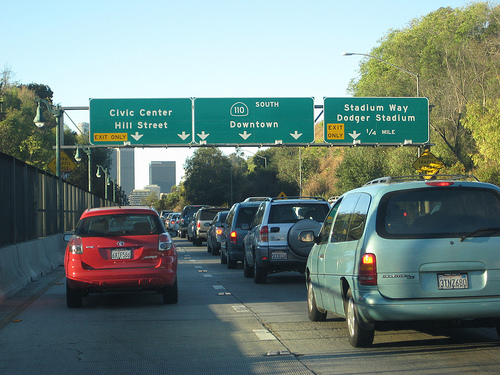Accounting
5 Ways to Get Tax Deductions for Local Transportation Uses
Frequently, the IRS challenges deductions for business-related driving expenses, especially when they involve local travel. Start with this basic premise: To qualify for transportation deductions, you must be traveling away from your tax home to a business location. For this purpose, your tax home is generally your principal place of business, not the place where you live, eat and sleep.
Aug. 21, 2014

[From the Tax Series: Protecting Travel & Entertainment Deductions]
Frequently, the IRS challenges deductions for business-related driving expenses, especially when they involve local travel. Start with this basic premise: To qualify for transportation deductions, you must be traveling away from your tax home to a business location. For this purpose, your tax home is generally your principal place of business, not the place where you live, eat and sleep.
Therefore, you can’t deduct the cost of commuting back and forth from work, no matter how much your clients believe they should be able to. The IRS views this as a purely personal expense even though you’re going to work for business reasons. And it doesn’t matter if you’re driving or if you travel by bus, rail or taxi or if you do work during the commute. Period.
But that doesn’t mean a client can’t deduct some transportation expenses that are in the nature of commuting, but fall outside the technical definition. Here are five prime examples:
1. Working from home: If your home office is your principal place of business — for example, you’re self-employed or your employer requires you to work from home — your tax home is the same as your home. In this case, you can deduct the cost of visiting a client or customer across town as long as you keep the proper records. But if you stop for a carton of milk on your way home, the portion of the trip representing personal travel is nondeductible.
2. Multiple business locations: Suppose that you’re based at one of several local job locations and travel between them. For instance, you might be a dermatologist with countywide offices or an officer at a bank operating multiple branches. The cost of the travel between the two business locations, regardless of the method, is deductible. However, if you don’t go directly from one place to the other, your deduction is limited to what it would have cost you for direct travel.
3. Short business stops: It may be advantageous for you to stop off and visit a client or customer on the way into work or on the way home. Accordingly, you may deduct the cost attributable to the travel between your regular place of business and the client or customer’s place of business. But the rest of your commuting remains a nondeductible personal expense.
4. Temporary assignments: Your business may require you to work at a distant job site for a short period of time. Instead of making a long commute each day, you might decide to stay close to the work site and come home weekends. Assuming that the job lasts no more than a year, it qualifies as a temporary assignment. This means you can deduct your lodging and meal expenses, within certain limits, plus the travel between the distant work site and home.
5. Business education: If you’re taking courses at a local college to improve your job skills, you may usually go straight to school after work on weekdays. The cost of the travel between work and the school is deductible (or between school and work if you’re taking a morning class).
Naturally, you can only deduct those T&E expenses that are properly documented. (We’ll have more on this in a future article). Also, if you’re a company employee, you must claim these expenses as miscellaneous itemized expenses, subject to the usual limits.
